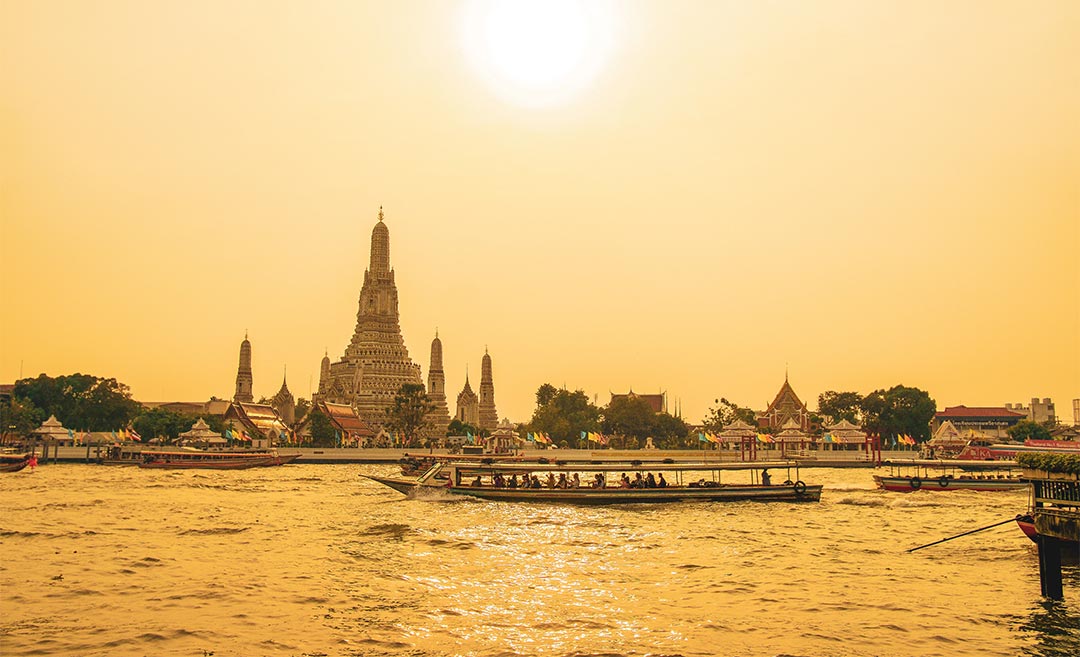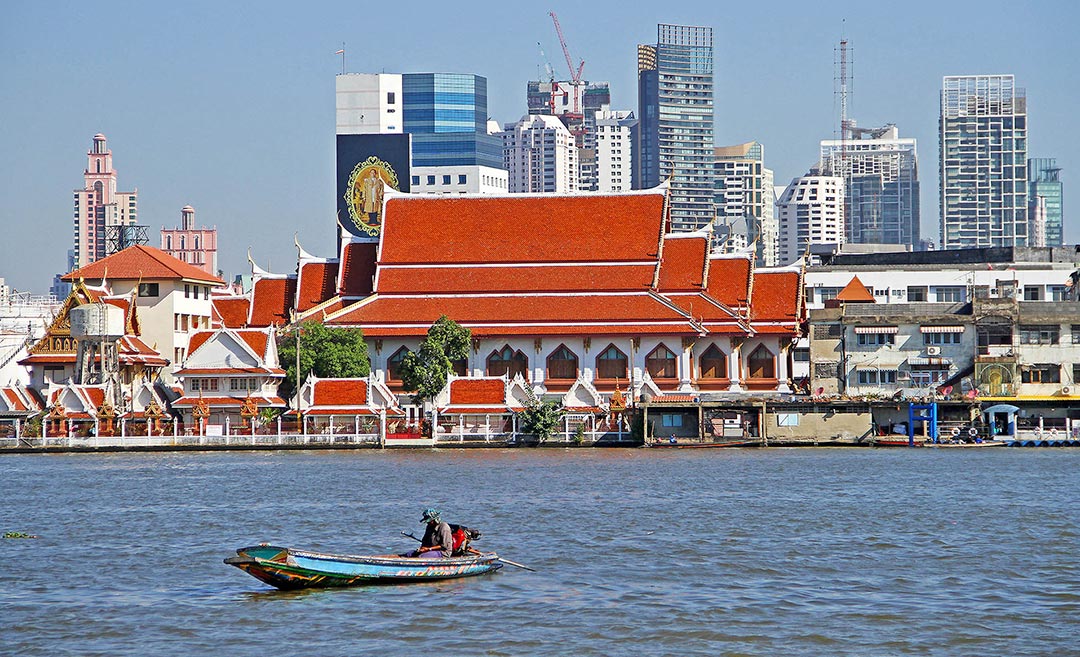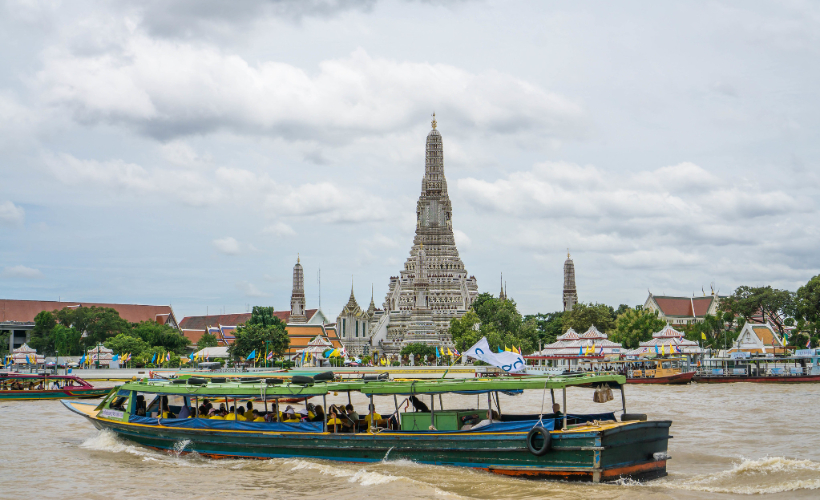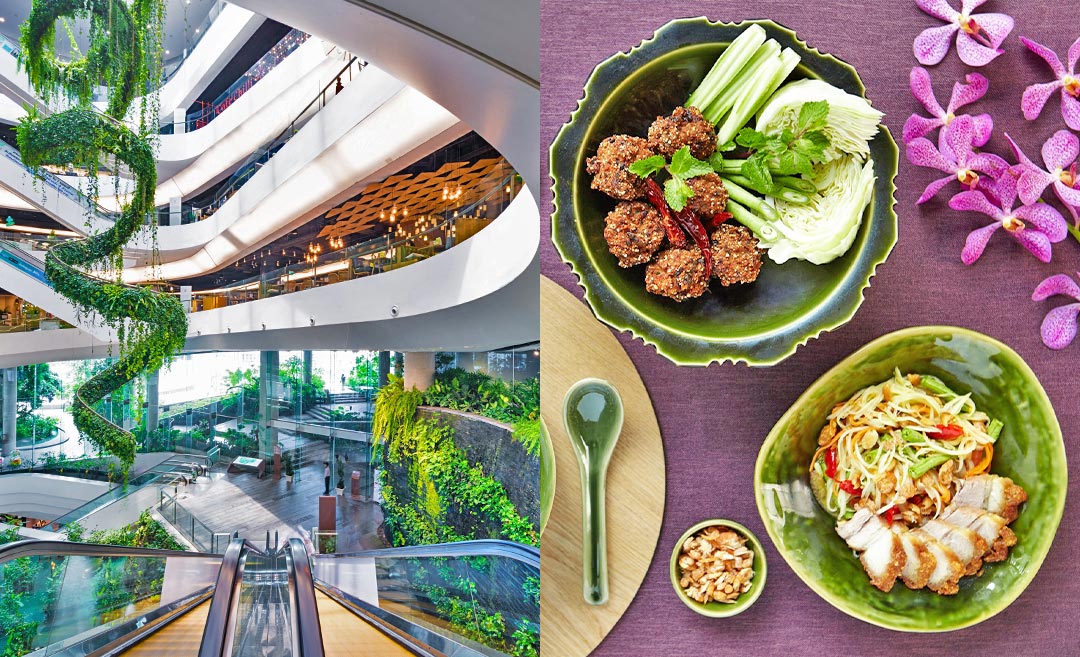Sawadee ka! Say hello to Bangkok, Thailand’s mesmerising capital, where ancient traditions coexist harmoniously with a one-of-a-kind urban landscape. Oozing with ornate temples, larger-than-life markets, and an incomparable nightlife, Bangkok is a tapestry of cultural treasures waiting to be explored. It’s no wonder travellers from all walks of life flock to this Southeast Asian capital.
Stunning landmarks like the Grand Palace and Wat Arun showcase Thailand’s rich heritage; the city truly dazzles with its intricate architecture and spiritual significance. Navigate the city’s bustling streets using the efficient BTS Skytrain or indulge in a tuk-tuk ride for an authentic Bangkok experience.
From the irresistible flavours of Thai cuisine to the pulsating energy of its nightlife, Bangkok beckons with an array of experiences for every traveller. If you’ve been meaning to journey through this enchanting city for the first time or once more, Zafigo’s comprehensive guide will get you started.
First things first: Lay of the land
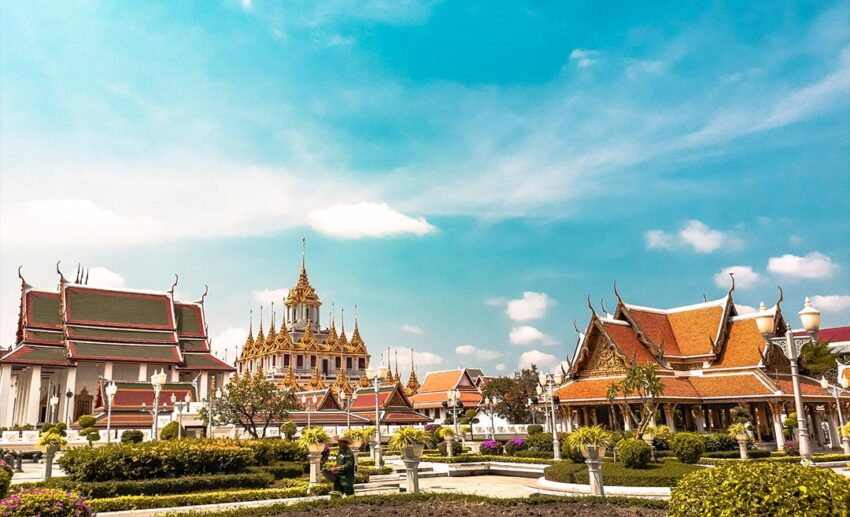
Bangkok’s rich tapestry of history dates back to the 15th century when it was merely a small trading post during the Ayutthaya Kingdom. Originally called ‘Krung Thep’ (City of Angels), Bangkok became the capital in 1782 when King Rama I established the Chakri Dynasty.
The city’s historical significance is evident in its majestic landmarks like the Grand Palace, constructed in 1782, and the adjacent Wat Phra Kaew (Temple of the Emerald Buddha). These iconic sites served as the official residence of Thai kings for over 150 years and continue to be symbols of the nation’s monarchy and cultural heritage. Bangkok also played a pivotal role in trade, evidenced by its location along the Chao Phraya River, which facilitated commerce and influenced the city’s growth.
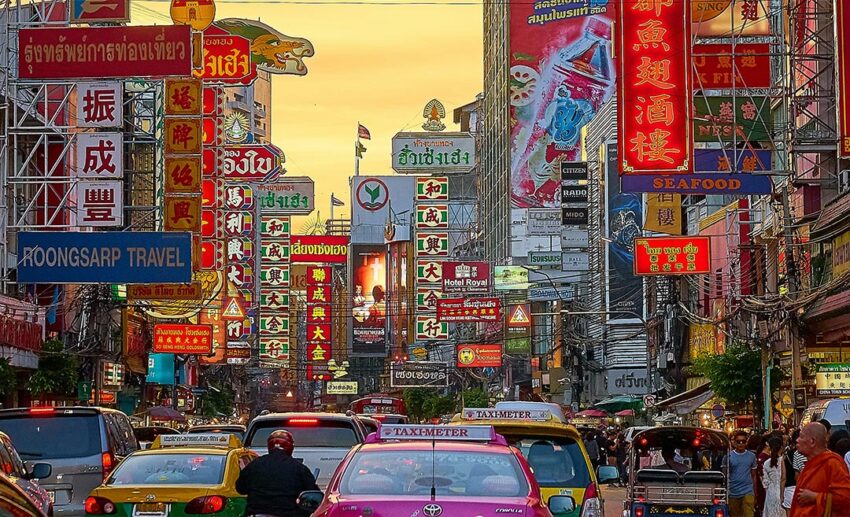
Over time, Bangkok transformed into a bustling metropolis, embracing modernity while preserving its cultural roots, offering travellers a fascinating blend of ancient traditions, stunning architecture, and a vibrant cityscape that reflects its historical legacy.
Understanding Bangkok’s history provides a deeper appreciation for its landmarks and cultural significance, inviting visitors to delve into the city’s rich past while experiencing its dynamic present.
Getting in and around safely
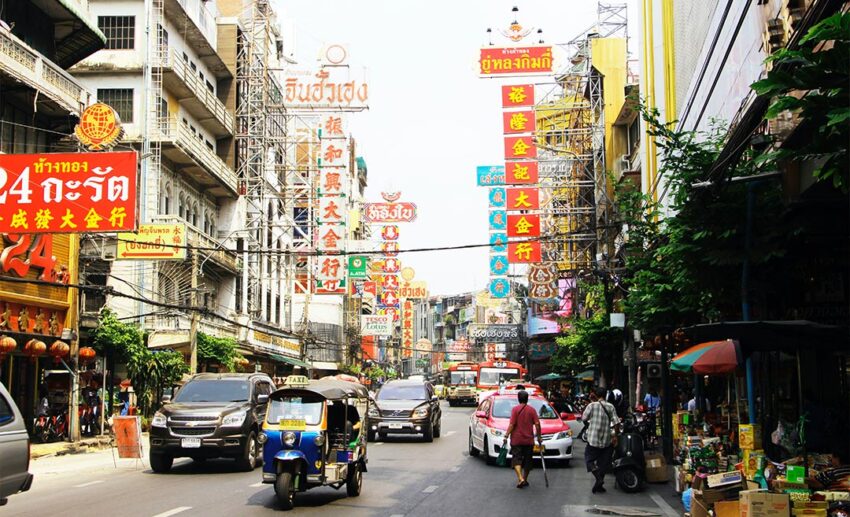
Like most Southeast Asian metropolises, Bangkok is pretty easy to navigate. Getting in and around the city is inexpensive through public transportation, and diverse options are available:
1. BTS Skytrain (BTS): The BTS is an elevated rapid transit system connecting major Bangkok areas. It’s fast, efficient, and avoids traffic congestion. The BTS covers popular areas like Sukhumvit, Silom, and Siam, making it convenient for travellers to reach shopping centres, hotels, and attractions.
2. MRT Subway: The MRT complements the BTS, covering different parts of the city. It’s mainly for reaching destinations not directly accessible by the BTS, such as Chatuchak Weekend Market, Hua Lamphong Railway Station, and Chinatown.
3. Taxis: Taxis in Bangkok are plentiful and relatively inexpensive, especially considering the convenience they offer. Just be sure the driver turns on the meter (most should) to avoid negotiating fares. Stick to reputable companies like Grab or All Thai Taxi for convenience and safety.
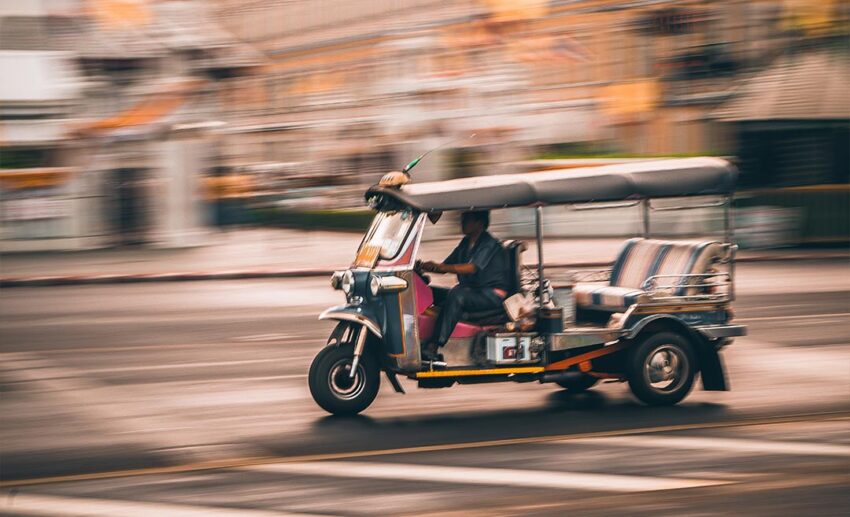
4. Tuk-tuks: Tuk-tuks are a fun way to experience Bangkok, but before getting in, be sure to negotiate a set fare. They’re best for short distances and can be more expensive than taxis.
5. Chao Phraya Express Boat: Want a transportation mode that is scenic and efficient? Try the Chao Phraya Tourist Boat or regular public boats that cater to locals. You’ll pass by some key landmarks, so have your camera ready.
Pro-tip: If you’re planning on using taxis or tuk-tuks, try to have the address written in Thai or use a map app on your phone to ensure smooth communication. Bear in mind Bangkok’s famed traffic congestions too, and plan your journey accordingly.
Where to stay
When it comes to hotels and resorts, Bangkok has something for everybody. Choose accommodations in the Sukhumvit area for its modern hotels, vibrant nightlife, and proximity to shopping centres. For a cultural experience, stay near the Old City (Rattanakosin), where you’ll be close to historic sites and the Chao Phraya River.
$$$
Siam Kempinski Hotel Bangkok
Four Seasons Hotel Bangkok
If you want to splurge, check in to hotels and resorts like the Four Seasons, Siam Kempinski, Mandarin Oriental Bangkok, or the St. Regis. These familiar names will spoil you with luxurious accommodation, top-notch service, an extensive food menu, and the list goes on.
$$
Pullman Bangkok Hotel G
INNSiDE by Meliá Bangkok Sukhumvit
Going down in price point are places like Pullman Bangkok Hotel G, Novotel, or INNSiDE by Meliá Bangkok Sukhumvit that don’t skimp on quality but are still affordable enough; they’re all in areas accessible by public transport too!
$
Ramada by Wyndham Bangkok
Mandarin Hotel Bangkok
For something even more wallet-friendly, check out hotels like The Berkeley Hotel, Mandarin Hotel Bangkok, or Ramada by Wyndham.
Places to see & things to do
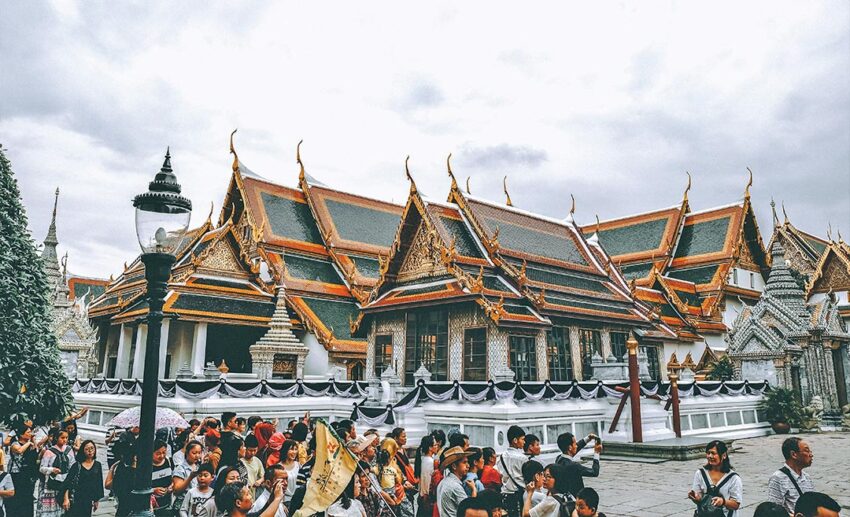
1. The Grand Palace and Wat Phra Kaew: A stunning architectural marvel, the Grand Palace served as the official residence of Thai kings for centuries. Within its grounds, visit Wat Phra Kaew, home to the revered Emerald Buddha, Thailand’s most sacred religious icon.
2. Wat Arun (Temple of Dawn): Wat Arun, an iconic riverside temple known for its intricately decorated spires, is something to admire when in Bangkok. You must brave the steep steps for a breathtaking view of the Chao Phraya River and Bangkok skyline.
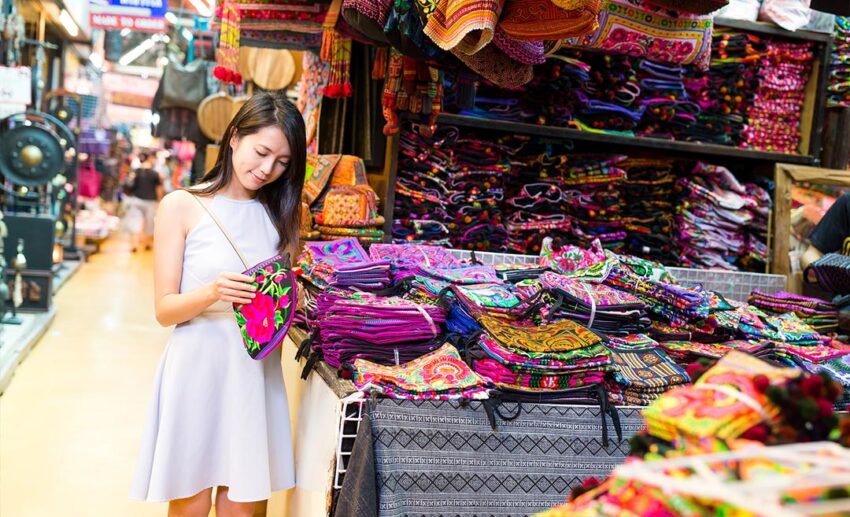
3. Chatuchak Market: Chatuchak may not be everyone’s cup of tea, but a trip to Bangkok is truly incomplete without a visit. Known as one of the largest weekend markets, a vibrant atmosphere pulsates through over 8,000 stalls. Find trinkets to bring home or clothes and handicrafts. Of course, there is local street food to sample as well.
4. Chao Phraya River Cruise: Explore the city and take in its sights and sounds by taking a cruise along the Chao Phraya River. Enjoy views of landmarks like Wat Arun, the Grand Palace, and modern skyscrapers while getting a glimpse of local life along the riverbanks.
Where to eat
1. Jay Fai: Some may deem this overrated, but this Michelin-starred street food spot is famous for its crab omelettes and other seafood staples cooked by the charismatic owner-chef, Jay Fai. It would be a sin not to eat here. While the queue is long, it’s definitely worth it.
Address: 327 Maha Chai Rd, Samran Rat, Phra Nakhon, Bangkok 10200, Thailand
Phone: +66 2 223 9384
2. Sorn: From renowned Michelin-starred street food, we move on to fine dining. One of the best places for it in Bangkok is none other than Sorn. Tucked into a two-storey mansion, the restaurant serves phenomenal Southern Thai food.
Address: 56 Soi Sukhumvit 26, Klongton Khlong Toei, Bangkok 10110, Thailand
Phone: +66 99 081 1119
3. Soei Restaurant: This culinary gem is worth exploring thanks to its exceptional Thai home-style dishes known for their robust flavour and comforting tastes. Try their stir-fried dishes, soups, and curries, all prepared with fresh ingredients and traditional recipes that have stood the test of time.
Address: Phibun Watthana 6 Alley, แขวงพญาไท Phaya Thai, Bangkok 10400, Thailand
Phone: +66 61 096 1616
4. Som Tam Jay So: Specialising in Som Tam, or spicy green papaya salad, this hidden gem in Silom offers diners a variety of Som Tam dishes and other north-eastern Thai delicacies. While the occasional fine dining is what every foodie needs, Bangkok truly shines when it comes to street food.
Address: Phiphat 2, Silom, Bang Rak, Bangkok 10500, Thailand
Phone: +66 85 999 4225\
5. Pak Khlong Talat (Flower Market): If you’re looking for somewhere that serves not just one but a variety of local street food, head over to Pak Khlong Talat. This place comes alive at night with many vendors offering an array of Thai snacks, desserts, and savoury treats, perfect for a late-night food adventure.
Address: สน พระราชวัง Pak Khlong Talat – Wat Kanlayanamit, Khwaeng Wang Burapha Phirom, Phra Nakhon, Bangkok 10200, Thailand
Bars to check out
Bars in Bangkok are renowned and always make it into lists-of-bests –– not just for their exceptional drinks but also the views accompanying them. And it’s no secret that the nightlife scene in Bangkok is one that’s worth indulging in. Here are a few top spots worth checking out.
1. Sky Bar at Lebua: Perched on the 64th floor of the State Tower, Sky Bar offers unforgettable panoramic views of Bangkok’s skyline. Known for its signature cocktail, the Hangovertini, made famous by the movie The Hangover Part II, this rooftop bar provides a luxurious and memorable experience. Whether alone or with company, this bar is a must.
Address: 64th Floor, State Tower at The Dome, 1055 Si Lom, Silom, Bang Rak, Bangkok 10500, Thailand
Phone: +66 2 624 9555
2. BKK Social Club: Nestled within the glamorous Four Seasons Hotel is the equally glamorous BKK Social Club. As one of the world’s finest bars (#13 on The World’s 50 Best Bars 2023 list), you can expect (and enjoy) spectacular house cocktails and a menu that includes vegetarian options. Keep in mind that you should make bookings at least two weeks in advance to avoid any disappointment.
Address: 300/1 Charoen Krung Road, Khwaeng Yan Nawa, Khet Sathon, Bangkok 10120, Thailand
Phone: +66 2 032 0888
3. Octave Rooftop Lounge & Bar: Situated on the top three floors of the Marriott Hotel Sukhumvit, Octave Rooftop Lounge & Bar boasts an impressive rooftop terrace with a stylish ambience. Enjoy an extensive drink selection and a lively atmosphere overlooking Bangkok’s skyline.
Address: 2 Soi Sukhumvit 57, Khwaeng Khlong Tan Nuea, Watthana, Krung Thep Maha Nakhon 10110, Thailand
Phone: +66 2 797 0000
Best time to visit
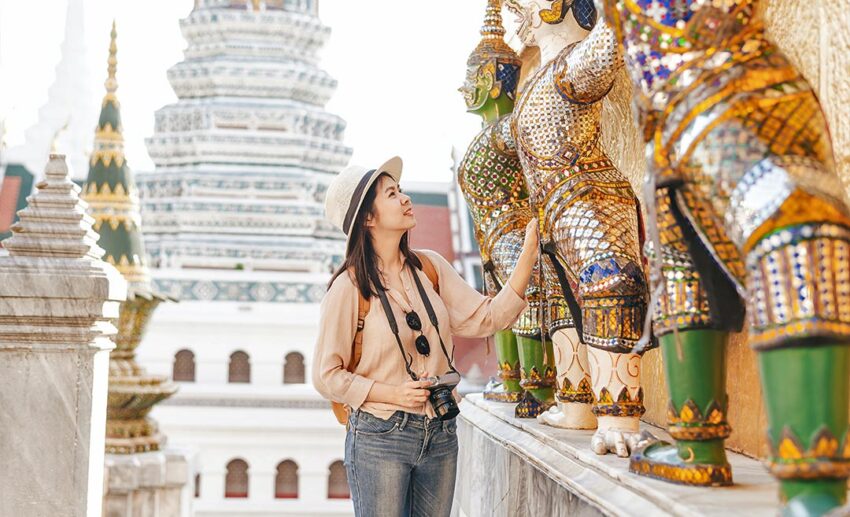
Plan your visit between November and February when the weather is cooler and more comfortable for exploration of the city. The rainy season happens from June to October, so if you have outdoor activities in mind, then these months should be avoided. Due to its choking traffic levels and other human-made pollutions, Bangkok’s air quality is severely polluted, so remember to mask up!

